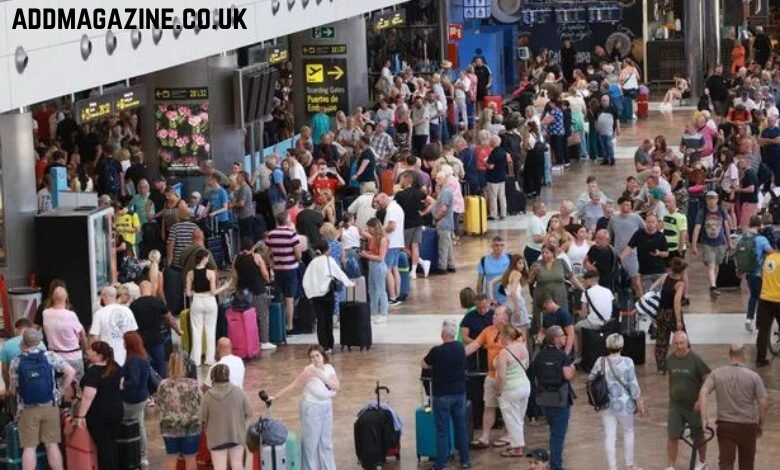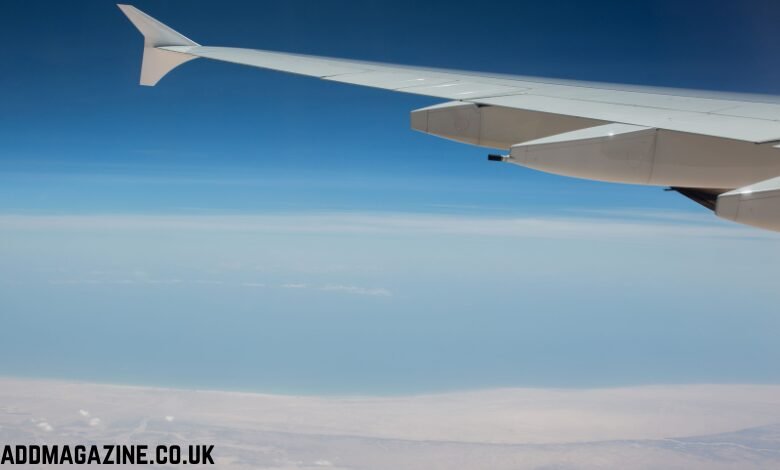Tenerife South Airport, one of Spain’s busiest gateways to the Canary Islands, was thrust into the international spotlight recently following a series of chaotic and distressing scenes that unfolded at the beginning of the school holidays. A staggering number of British holidaymakers found themselves in grueling two-hour queues, battling through “inhuman” conditions even before reaching passport control. The incident prompted an emergency summit convened by top Spanish officials to address what they referred to as a “structural issue” exacerbated by post-Brexit changes and insufficient staffing. This crisis at Tenerife’s main airport not only raised alarms about the infrastructure of the airport but also cast a shadow over the island’s image as a premier tourist destination.
The Tenerife Airport Chaos: A Startling Sequence of Events
The incident occurred on Monday, May 26, when approximately 500 British holidaymakers found themselves stranded on the tarmac at Tenerife South Airport. The passengers were left waiting for nearly 45 minutes to disembark the plane, only to be greeted by broken escalators and the sight of sprawling lines winding in and out of the terminal. As travelers navigated these disorganized queues, they were faced with a daunting reality: just four airport officials were assigned to passport control duties across two booths. The result was nothing short of chaotic—lines snaked for miles, with passengers caught in claustrophobic conditions that some likened to “third-world” standards.
The intense heat, compounded by the frustration of travelers, created a volatile environment. “Some parents had to lift their children onto their shoulders to prevent them from suffocating,” one local returnee, Lourdes Tourecillas from Bristol, told Canarian Weekly. “There were no toilets, and people were visibly distressed.” This statement encapsulated the extreme discomfort faced by passengers who were left without basic amenities during their prolonged wait. To make matters worse, the airport’s automated check-in systems malfunctioned, failing to recognize children’s passports, which only added to the delays and frustration.
A Structural Issue: The Impact of Brexit on Tenerife’s Airport Operations
In response to the crisis, Rosa Dávila, President of Tenerife’s ruling council, called for an urgent emergency summit to discuss the events and assess how such a situation could be avoided in the future. Dávila condemned the conditions, labeling them “unacceptable,” and blamed the chronic staffing shortages at the border control for the disarray. According to Dávila, the shortage of staff has become a persistent issue, exacerbated by the ongoing effects of Brexit. She argued that the staffing levels that were adequate prior to Brexit were no longer sufficient to handle the increased pressure on border control.
“This is a structural issue,” Dávila explained. “We can’t continue to operate with the same staffing levels we had pre-Brexit.” The impact of Brexit on staffing and logistics has been a recurring issue in Spain, especially at tourist-heavy airports like Tenerife South. The complexities introduced by Brexit—such as the need for additional border checks and procedures—have placed a strain on airports that were already handling large volumes of passengers.
Tenerife’s tourism sector, which plays a crucial role in the island’s economy, is grappling with the fallout from these operational inefficiencies. Local officials are pushing for greater collaboration and support from mainland Spain to resolve the staffing issues and avoid further disruptions during peak travel periods.
Impact on the Island’s Tourism: A Threat to the Tenerife Brand
The chaotic scenes at Tenerife South Airport did not go unnoticed, and the incident had immediate repercussions for the island’s tourism industry. Lope Afonso, Tenerife’s Tourism Minister, voiced his concern over the negative effect the event had on the island’s reputation. “This is the first impression our visitors get. After hours on a plane, they’re met with long waits and no explanation,” Afonso stated. “It’s not acceptable, and it’s hurting our brand as a quality tourist destination.”
Tenerife has long been a major tourist hub, attracting millions of visitors each year, particularly from the UK, due to its warm weather, beautiful landscapes, and rich cultural heritage. The island’s tourism industry depends heavily on these visitors, and any disruption at the airport has the potential to cause significant damage to its image. Afonso emphasized the need for the island to remain competitive in the global tourism market, especially as other countries have adapted their systems in the wake of Brexit.
“Tenerife competes globally. Other countries have adapted their systems since Brexit. Why haven’t we?” he asked, pointing to the inadequacies in the current operational setup.
With the summer season fast approaching, Afonso issued a stark warning that the airport could face similar issues unless immediate action was taken to rectify the staffing and operational issues. “We need immediate solutions to avoid this happening again, especially with the busy summer season ahead,” he cautioned.
The Role of Local and National Politics in Airport Management
The Tenerife airport crisis has also highlighted the ongoing tension between local authorities and mainland Spanish politicians. Rosa Dávila expressed her frustration at the lack of attention and support from the central government in addressing the staffing issues at the airport. “There’s a serious lack of respect towards Tenerife,” Dávila remarked. “We’re managing essential services locally, but without state support, we’re being left to fail.”
This sentiment reflects the broader issue of decentralization in Spain, where local governments often find themselves battling for resources and attention from the central government. In the case of Tenerife, the lack of resources to manage the airport effectively is not a new issue, but the problem has been amplified by the post-Brexit situation. Many local officials feel as though they are left to deal with the fallout of national policies without receiving the necessary support from the state.
Addressing the Immediate Crisis: Solutions and Preventive Measures
In the wake of the May 26 incident, several measures have been proposed to address the immediate crisis and prevent future occurrences. One of the primary solutions being discussed is increasing the number of border control staff at Tenerife South Airport, particularly during peak travel periods such as school holidays and summer months. Local authorities are also pushing for better coordination with national government agencies to ensure that staffing levels are aligned with the demands of the post-Brexit travel landscape.
In addition, there have been calls for an overhaul of the airport’s automated check-in systems to ensure that they are fully functional and able to process the passports of all travelers, including children. The failure of the automated systems during the May 26 incident significantly contributed to the delays and frustration felt by passengers. Updating the technology at the airport could streamline operations and help alleviate some of the pressure on staff.
Furthermore, there are discussions around improving passenger communication. During the chaos, many travelers were left without clear information about the delays and the reasons for the conditions they were experiencing. Enhancing the communication systems at the airport could help mitigate confusion and reduce passenger anxiety during periods of high traffic.
Long-Term Implications for Tenerife’s Airport Operations
The Tenerife airport crisis has underscored the urgent need for comprehensive reform in the island’s airport operations. As the tourism industry continues to grow and attract more visitors, the strain on the airport infrastructure will only increase. If the issues highlighted during the May 26 incident are not addressed, there is a significant risk that Tenerife could lose its competitive edge as a popular tourist destination.
While local authorities are taking the necessary steps to address the immediate concerns, the long-term solution requires a collaborative effort between the local government, national authorities, and the airport management. The island’s economy is heavily reliant on tourism, and any disruption to the flow of visitors can have lasting effects on the livelihood of residents and businesses.
Conclusion
The emergency meeting convened by Rosa Dávila and other top officials marks a crucial turning point for Tenerife’s airport operations. The events of May 26, which exposed the glaring shortcomings in staffing and infrastructure, serve as a wake-up call for both local and national authorities. With summer on the horizon, the need for immediate action has never been more pressing.
Tenerife’s airport must undergo a significant overhaul to address the challenges posed by increased passenger numbers, staffing shortages, and outdated technology. Failure to do so could jeopardize the island’s reputation as a premier tourist destination and lead to further operational crises in the future. As local officials continue to push for support from the central government, it remains to be seen whether the necessary changes will be made to ensure that Tenerife can maintain its position as one of Spain’s most popular tourist spots.
FAQs
1. What caused the Tenerife airport crush during the school holidays?
The chaos was due to understaffed border control, malfunctioning check-in systems, and overwhelming passenger numbers during peak travel times.
2. How long did passengers have to wait at Tenerife Airport during the incident?
Passengers endured up to two-hour queues, with a 45-minute wait just to disembark, followed by long passport control lines.
3. What measures are being taken to prevent future incidents at Tenerife Airport?
Authorities are increasing staffing, upgrading automated systems, and improving communication to handle passenger flow and avoid future crises.
4. How has the Tenerife airport incident impacted the island’s tourism?
The incident damaged Tenerife’s reputation as a top tourist destination, with visitors facing long delays and poor service upon arrival.
5. What has Tenerife’s local government done in response to the crisis?
Tenerife’s President, Rosa Dávila, called for an emergency meeting to address staffing shortages and improve airport operations.




